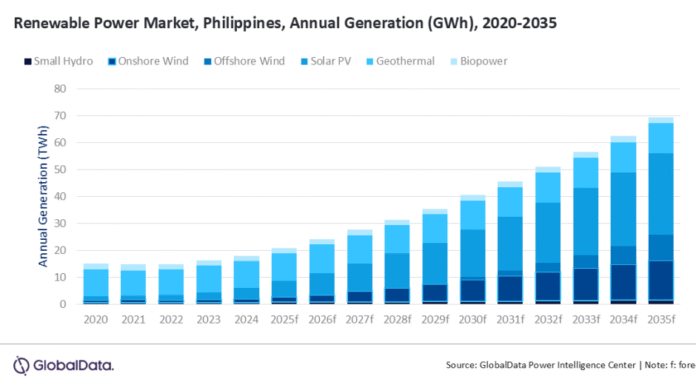The Philippines is charting a strong trajectory toward renewable energy growth, driven by a clear policy framework and substantial investment commitments.
The government has set targets — 35 percent of electricity generation from renewables by 2030 and 50 percent by 2040 — anchoring the Philippines’s transition to a cleaner energy mix. To meet these goals, the Philippines aims to install 15GW of clean energy capacity by 2030.
GlobalData forecasts a compound annual growth rate (CAGR) of 13.1 percent for renewable electricity generation between 2024 and 2035, with renewables expected to produce 69.4TWh by 2035 in the Philippines.
This marks a significant shift from the 2024 power generation mix in the Philippines, where thermal sources dominate at 78 percent, and renewables account for just 15.6 percent. By 2035, renewables are projected to increase their share to 33 percent, while thermal drops to 62.7 percent.
The country’s strategy includes aggressive expansion across multiple renewable segments. From a 2020 baseline, geothermal capacity is expected to grow by 75 percent, hydropower by 160 percent, wind capacity will reach 2.3GW, and biomass will rise by 0.3GW by 2040. A key enabler of this transition is the $15 billion partnership with UAE-based Masdar, which is aimed at developing solar, wind, and battery storage projects with a target of 1GW clean capacity by 2030.
Investment is another driver of growth. Between 2025 and 2030, $26.2 billion is projected to flow into the power sector in the Philippines. Solar PV will lead with 38.8 percent of the investment, followed by onshore wind (19.4 percent) and offshore wind (17 percent).
These trends reflect a comprehensive national effort to diversify energy sources and build a sustainable energy future, aligned with rising demand fueled by economic development, urbanization, and digital infrastructure expansion.
GreentechLead.com News Desk

